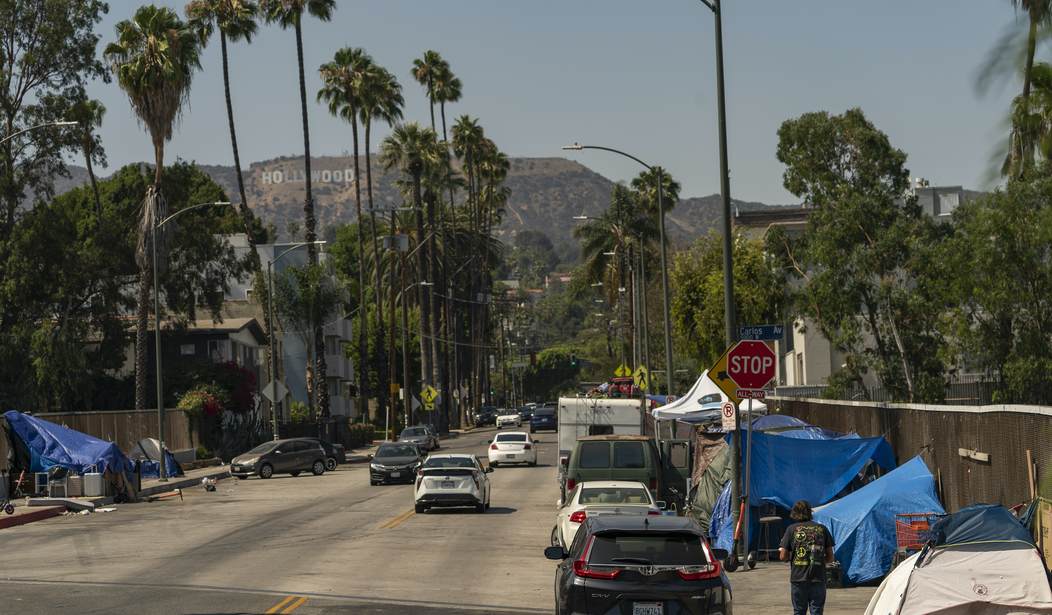The Wall Street Journal has compiled a wealth of statistics on homelessness that show a rise of 11% over just the last year. That’s the biggest spike in homelessness since these statistics began being kept in 2007. The next highest spike was 2.7% in 2019.
The reasons are rising housing costs, lack of affordable rental units, and the nation’s continuing opioid crisis, according to reports from nonprofits and government agencies counting the homeless.
The Journal reviewed data from more than 300 entities that count homeless people in areas ranging from cities to entire states. The entities — known as continuums of care — include private charities, advocacy groups, and religious groups.
The numbers come from so-called point-in-time counts conducted earlier this year. HUD’s assessment may alter the final tally.
The new number is at least 577,000 homeless. It should be noted that “point-in-time” counters are usually undercounts of the true problem. HUD will be out later this year with a final estimate representing a single night of homelessness in America.
“The Covid-relief funds provided a buffer,” said Donald Whitehead Jr., executive director at the National Coalition for the Homeless, an advocacy group. “We’re seeing what happens when those resources aren’t available.”
Obviously, only a brain-dead “advocate” would think we could continue to spend $5.1 trillion a year to keep people off the streets. Pandemic spending was an extravagantly expensive band-aid for America’s problems, which require a lot more than Joe Biden simply throwing money at them.
“We are beginning to feel the full economic fallout of the Covid-19 era,” said Jamie Rife, executive director of the Metro Denver Homeless Initiative, the local continuum.
Related: Welcome to Bidenville, Where the Third World Comes to Squat
Denver reported a 32% increase in homeless numbers in this year’s point-in-time count, among the most significant increases in big cities. Los Angeles County reported a 10% increase and New Orleans had a 15% increase, while other cities, like New York, have been swamped by a huge increase in asylum seekers.
The U.S. Interagency Council on Homelessness, a federal agency, also blamed growing homeless counts on housing costs and shortages. The agency said the 2023 numbers don’t reflect recent efforts the Biden administration has undertaken to combat homelessness, such as awarding more than $500 million in new vouchers and grants to address rural and unsheltered homelessness.
HUD, which deferred comment on the Journal’s findings to the homelessness agency, hasn’t released its report from counts performed in early 2023. But the Journal has reviewed preliminary numbers from most of the roughly 400 continuums of care, ranging from metro areas with huge homeless populations such as Los Angeles to rural areas and the island territory of Guam.
Certainly, the cost of housing has become a huge impediment for people in poverty to avoid becoming homeless. During the pandemic, the government avoided massive homelessness by giving cities huge amounts of money to keep people sheltered.
Major cities avoided a tidal wave of homelessness during the pandemic because the federal government offered emergency rental relief, eviction moratoriums, stimulus checks and other pandemic-era aid. However, with those protections now vanished, financially challenged Americans face daunting housing prices, with the national median sales price at $441,000 and the median rental costing $2,000 a month as of May.
Homelessness rates have been climbing nationally by about 6% every year since 2017, according to National Alliance to End Homelessness data.
The solution won’t be easy, especially since even the most obvious solutions require up to a trillion dollars a year in mental health programs, addiction centers, remedial education, and job training. Then there would be another trillion dollars from a government-private mix to encourage low-income and affordable housing.
The effort just to ease the homelessness crisis is going to be extraordinarily expensive. Solving the problem will be multi-generational. And since homelessness is as much a disease of the mind as it is of the pocket, it’s likely always to be a problem in urban America.










